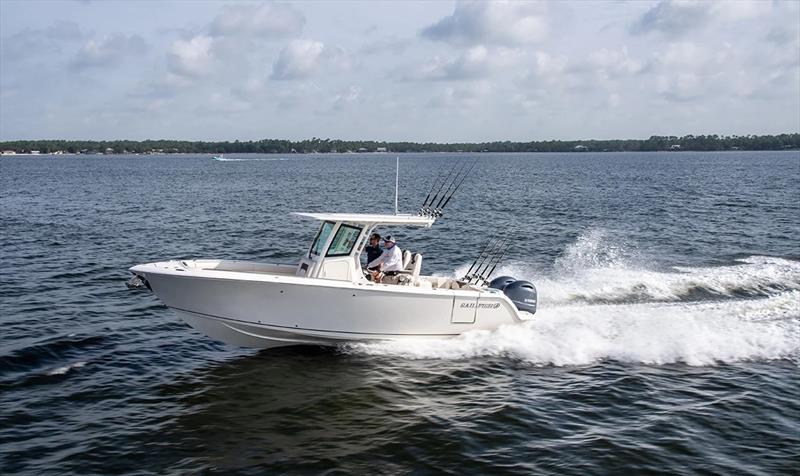
Best practices: How to run a Sailfish
by Sailfish Boats 20 Dec 2023 16:30 UTC

How to get the most from a Sailfish VDS Hull © Sailfish Boats
We often hear or read (mostly from competitive owners) that Sailfish Boats have a "wet ride". This is mainly because of the operational differences required in our Variable Degree Stepped hull versus a traditional vee hull bottom.
A traditional vee hull performs appreciably well in many conditions, slicing waves further toward the nose of the boat. Its dead rise is further forward on the helm and points more aggressively through waves. A Sailfish, however, with its signature waist-high gunwales and deeper cockpits, has a deeper deadrise at midship, and slices waves at a deeper delta point -further aft - than traditional hulls. It therefore requires subtle adjustments from the user to perform at maximum cruising efficiency.
When running a Sailfish VDS hull, a few adjustments to your operation and style will help you to get your best ride. To sum it up in three steps: use positive trim, tab down slightly, and add a little throttle. Denny Warren at Sailfish explains: "To get the most efficient and economical performance when running your Sailfish, there are three steps you want to take: apply positive trim, tab down slightly (only a bump or two), and add a little more throttle than you may be used to. You want to apply as much positive trim on the motors as possible, then barely tap down to engage the trim tabs. Wait a second to two to allow that little adjustment for the boat to react before hitting the tab again. Finally, give the boat a little more throttle to help it ride on top of the water. A lot of people tap the tab, get impatient, and tap several more times. Next thing they know, the boat's nose is stuffed down and they're soaking wet."
Of course, each captain, situation and condition are unique. This guideline is not absolute, so be sure to check with your local dealer for additional instruction. Under optimal conditions, you will want to ensure you are getting your Sailfish out of the water as much as possible to get the best fuel-economy ride. When you hit the tab button down, the transom will lift and hold the nose at a perfect position for best fuel economy and a smooth ride. "Trimming the motors up will lift the bow, and then tapping the trim tabs down will put force down on the transom against the water, optimally leveling up the boat," adds Denny.
We suggest you practice this nuanced running operation to get the most from your Sailfish and the VDS hull design. Find a protected, secluded spot on the water and take a weekend to learn the feel of your boat. Watch where the water breaks under the hull to find that sweet spot and optimal balance when you're up on plane.
Hydrodynamics and Hull Design
You don't have to have a PhD in physics to be a good captain, but there are a few basic principles of resistance and turbulence that apply to Sailfish hull design that are good to know. A Hyrodynamic Effect will take place as your boat moves through water, pulling objects toward its sides, and creating drag at the aft. Because of Bernoulli's Principle, which states that fluid moves faster as its pressure decreases, hydrodynamic lift will come into play. According to Scientific American, "As the water moves from the bow to the stern along the side of the boat, the forces begin to work. Turbulence will pull objects towards the side of the boat. From on board the boat, it looks like a kind of suction. Anything floating on the water will be drawn in. If it's light enough, it will get pulled under."
As any boat cuts through the air, a vacuum is created where two "parts" are split and want to come back together. When the boat is running, the wind coming across the deck creates a suction, like cups swirling in the back of a pickup truck (where you will see the same effect from the wind coming over the side). By running Sailfish boats a little faster on the throttle and taller with positive trim, the air will break further back on the hull and the two streams of air will come back together a little further back resulting in greater efficiency from reduced drag and dryer ride.